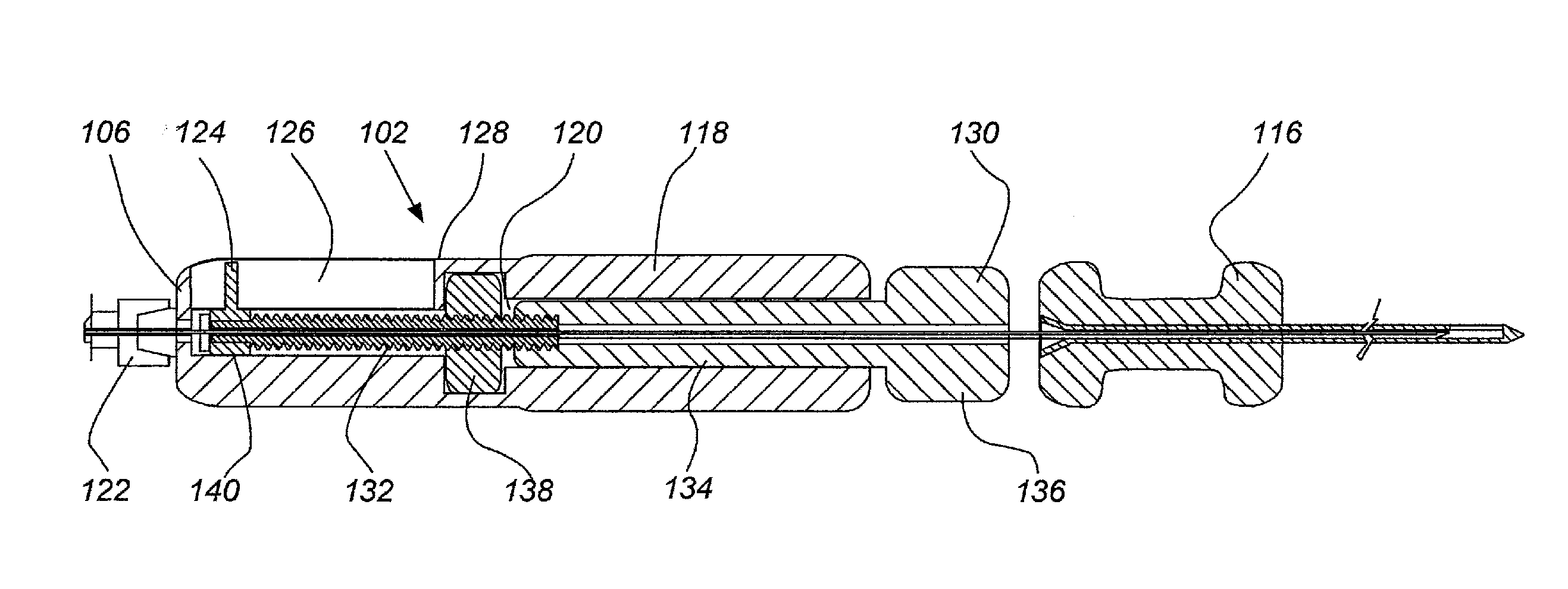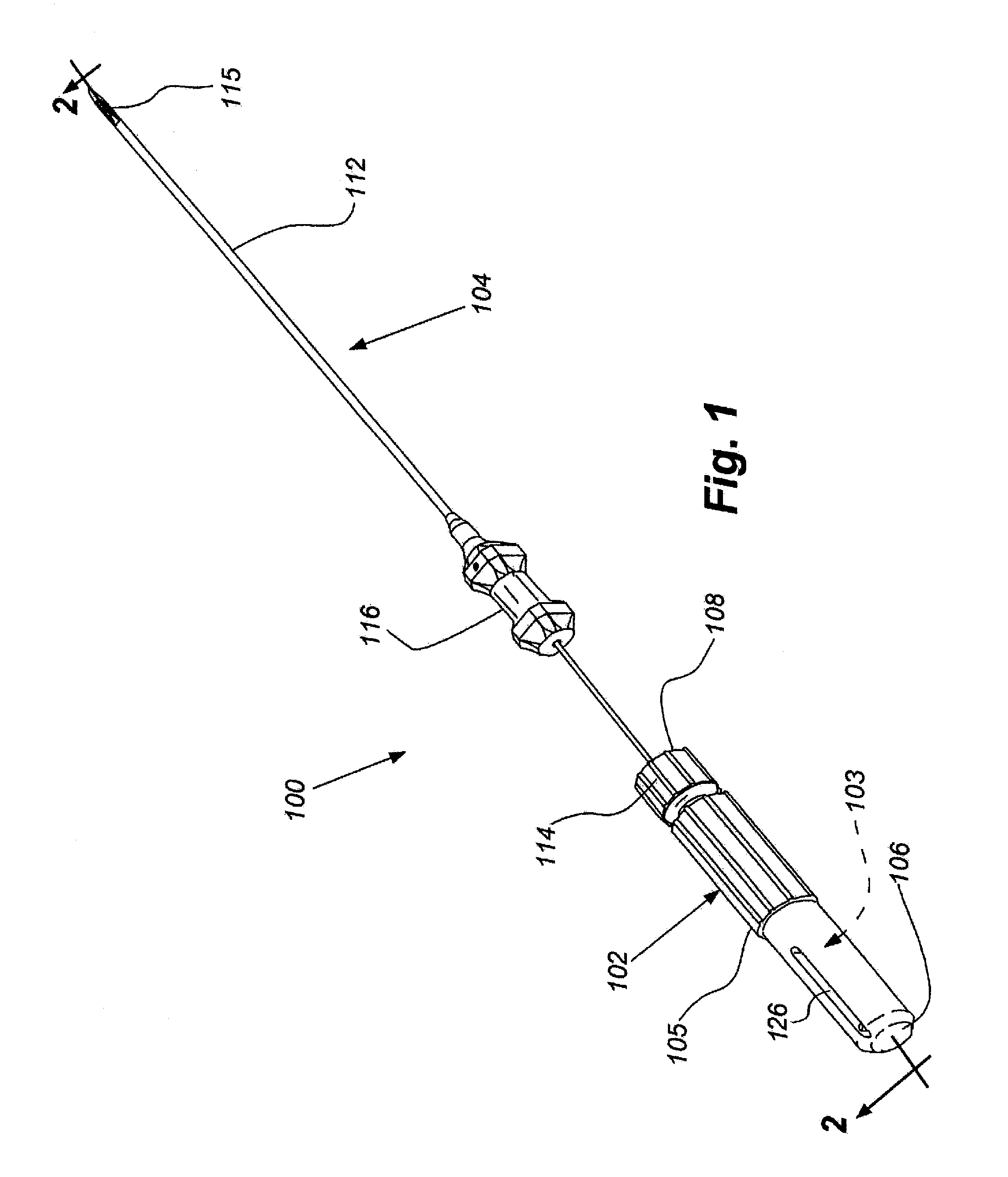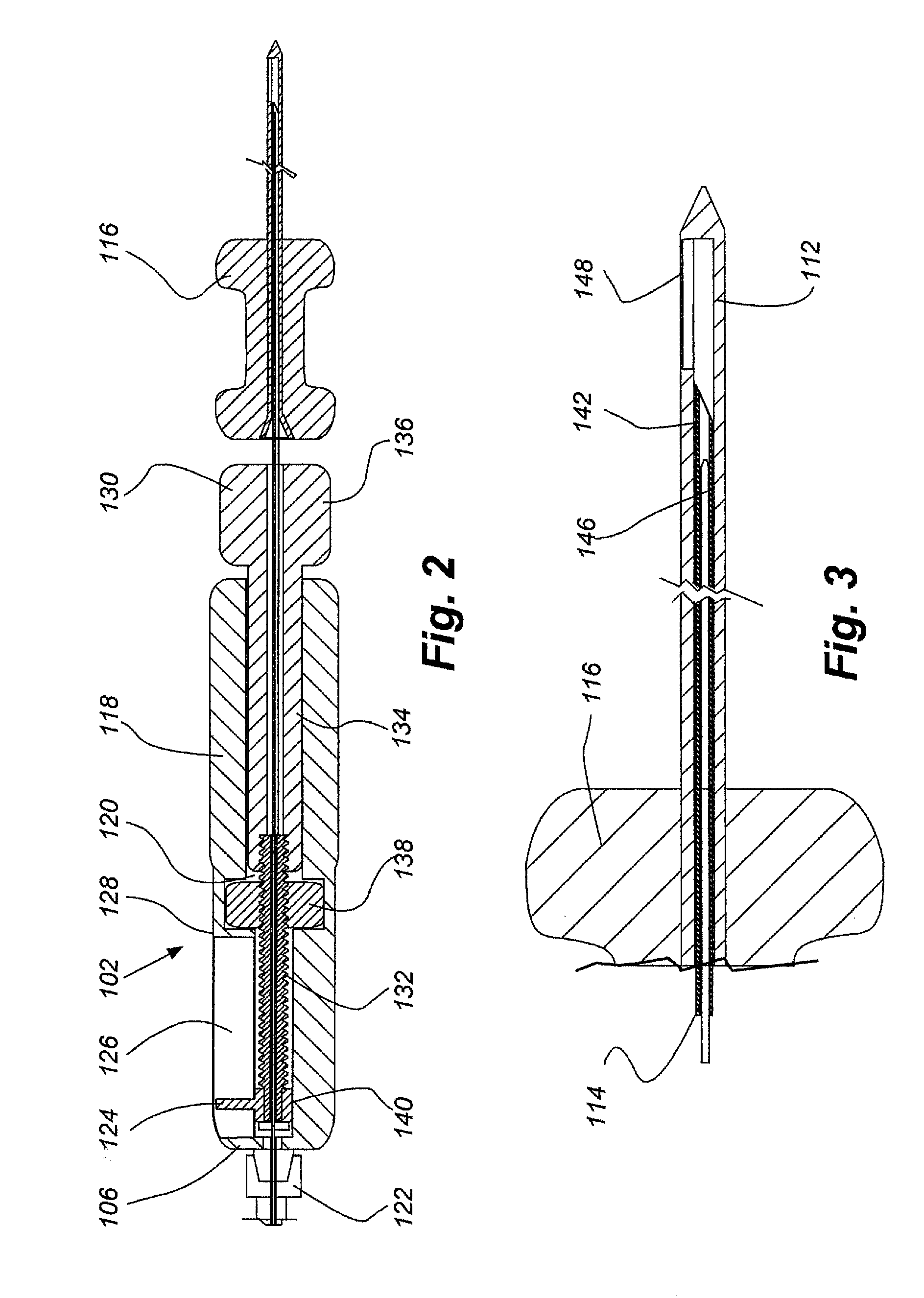Therapeutic Delivery Device
a delivery device and tissue technology, applied in the field of therapeutic delivery devices, can solve the problems of limiting the repair process, limiting the ability of the disc to be repaired by a therapeutic, and difficult to reach within the patient's body, so as to minimize the damage to the environment, accurate delivery of therapeutics, and the effect of reducing the invasiveness
- Summary
- Abstract
- Description
- Claims
- Application Information
AI Technical Summary
Benefits of technology
Problems solved by technology
Method used
Image
Examples
example 1
Cadaver Testing Utilizing Several Delivery Device Embodiments
[0081]FIGS. 13, 14A and B, 15A and B, 16A and B, 17A and B and 18 provide illustrative visualization of a delivery device embodiment of the invention in use during cadaver testing. X-rays were taken of variously positioned device embodiments in accordance with the present invention. FIG. 13 shows a guide cannula fully deployed with catheter advanced to annular-nucleus interface; FIG. 14A shows a L5 / S1 Lateral, with rotation of bevel up resulting in cannula and catheter driving cephalad and FIG. 14B shows L5 / S1 Lateral, with rotation of bevel down resulting in cannula and catheter driving caudally; FIG. 15A shows L5 / S1, rotation of bevel up resulting in cannula and catheter driving cephalad and FIG. 15B shows L5 / S1, rotation of bevel down resulting in cannula and catheter driving caudally; FIG. 16A shows an end table view where the arrow points to a catheter exiting a guide cannula and FIG. 16B shows a end table view where ...
example 2
Stem Cells Viability Based on Cannula Composition and Diameter
[0082]In order to further ascertain utility of various embodiments of the delivery device, mesenchymal stem cell viability was determined before and after injection through a Nitinol guide cannula.
[0083]A guide cannula constructed from Nitinol having a 0.024 inch diameter shows little adverse effect on cell viability as cells were injected / passed through the length of the cannula. Cell viability was similar to that of cells injected / passed through a stainless steel 18 g needle (0.049 inch diameter).
[0084]In particular, cultured mesenchymal stem cells were harvested and viability verified by testing a sample via a trypan blue exclusion test. Cells were then broken into two groups for injection through either the 18 g stainless steel needle or the Nitinol guide cannula. After injection, cell viability was re-determined based on how many viable cells were present after exit from either the needle or the cannula. There were 2...
example 3
Stem Cell Viability Based on Catheter Composition and Diameter
[0086]In order to further ascertain utility of various embodiments of the delivery device, mesenchymal stem cell viability was determined before and after injection through a Nitinol catheter.
[0087]A catheter constructed from Nitinol having a 0.011 inch diameter shows little adverse effect on cell viability as cells were injected / passed through the length of the catheter. Cell viability was similar to that of cells injected / passed through a stainless steel 18 g needle (0.049 inch diameter). However, unlike cells passed through the stainless steel needle, there was some cell loss in the catheter as compared to the 18 g needle.
[0088]In particular, cultured mesenchymal stem cells were harvested and viability verified by testing a sample via a trypan blue exclusion test. Cells were then broken into two groups for injection through either the 18 g stainless steel needle or the Nitinol catheter. After injection, cell viability ...
PUM
 Login to View More
Login to View More Abstract
Description
Claims
Application Information
 Login to View More
Login to View More - R&D
- Intellectual Property
- Life Sciences
- Materials
- Tech Scout
- Unparalleled Data Quality
- Higher Quality Content
- 60% Fewer Hallucinations
Browse by: Latest US Patents, China's latest patents, Technical Efficacy Thesaurus, Application Domain, Technology Topic, Popular Technical Reports.
© 2025 PatSnap. All rights reserved.Legal|Privacy policy|Modern Slavery Act Transparency Statement|Sitemap|About US| Contact US: help@patsnap.com



